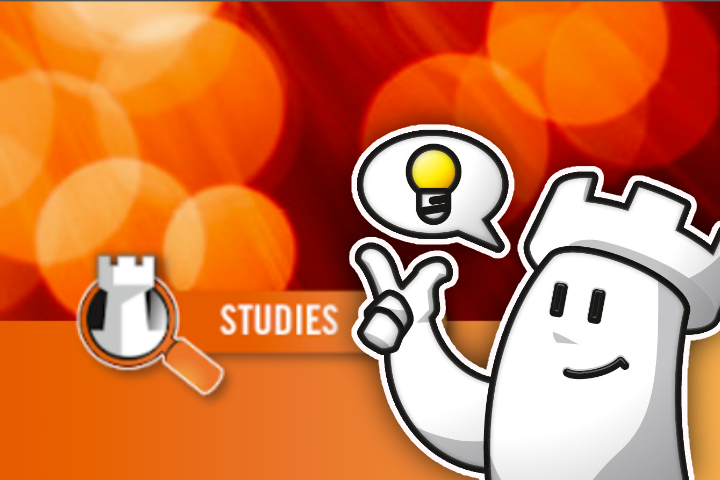


Some endgames can be dull, technical affairs, there is no argument. However, the same is true of some middlegames. There may be more pieces in the latter, more mystery, but if the game is not decided in it, the endgame will be the crucial stage. Knowing a position is drawn or won will be of little consolation if the final result on the scoresheet does not match that knowledge. Are there any more frustrating words than “I was winning” or “I should have won”?
The great Russian trainer, Mark Dvoretsky, has taught endgame play to innumerous players around the globe thanks to his masterpiece “Dvoretsky’s Endgame Manual”, in which he explains the fundamentals of this final stage of the game. He does this with amazing precision and clarity, and his work is filled with instructive samples illustrated by endgame studies. It is no surprise since the endgame study composers of the past were also key researchers into the theory of this phase, demonstrating concepts through startling positions that cemented the lessons with dramatic effect.
When one looks at this position offhand, the white king far behind the h-pawn, and miles away from his c-pawn, it seems an utterly hopeless task. The solution never fails to impress, even when you know it backwards and forwards.
As a player, and not an endgame specialist by any stretch of the imagination, the earliest and most striking one I ever saw was the immortal pawn endgame study by Richard Reti, shown above. The image of an apparently inevitable loss that was then irrevocably turned upside down into a draw left an indelible mark, challenging my preconceptions of what is possible even when faced with the seemingly impossible.
Studies have that ability to teach us to combine rigor of calculation with rich imagination. Dvoretsky, who trained a number of players who entered the elite ranks of competitors was a stout proponent of using endgame studies as a regular part of one’s training regime, both to work regular and consistent calculations and to keep one’s endgame skills on its toes.

Sagar Shah conducted the last ever interview of Mark Dvoretsky shortly before he passed away. It was very long and in depth. If you missed it, do check it out. (photo: Amruta Mokal)
What makes studies so special for calculations work compared to other types of positions? They have single clear solutions, while a standard endgame might allow for multiple paths to victory or a draw. This introduces a requirement for precision that other types of analysis might not impose. It doesn’t hurt that they can also be fascinating and beautiful to solve. Not a bad combination.
You can open it straight from the ChessBase Account page, by clicking on the corresponding tab:

Or you can just go to the page at studies.chessbase.com
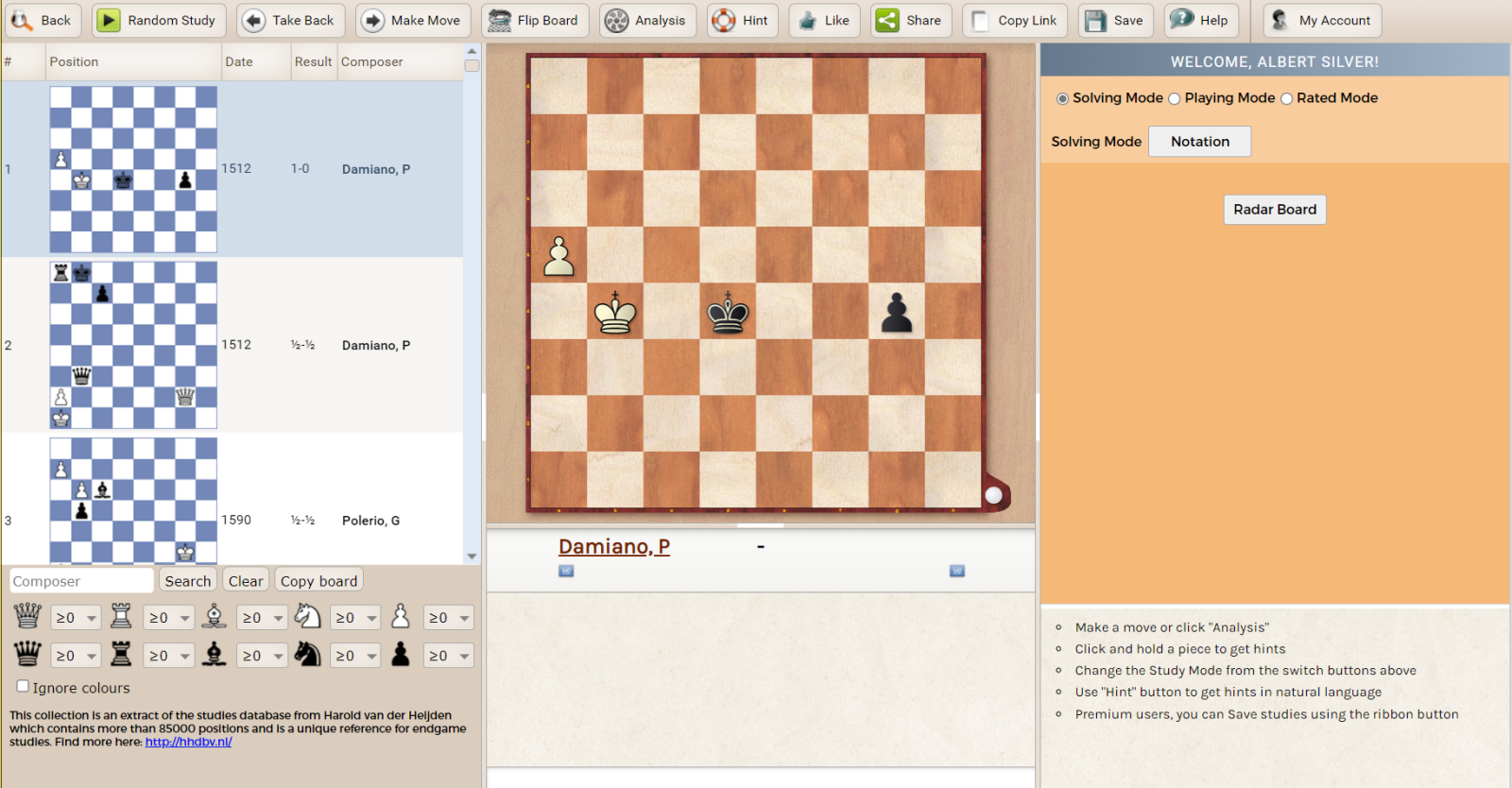
When you first open it up, the main page can seem intimidating, with a threat of complexity, but as a matter of fact it is really quite simple, and I will show you why.

The ribbon bar at the top is fairly self-explanatory, so i won't go into great detail on it. The two buttons that warrant an extra explanation are the Share button, which allows you to post the endgame with a replayer in social media, FEN, and so on.

Copy Link is to share a link to the original page where that exact study is found. For example, the link to the Reti study mentioned above is here. If you click on it, it will open the Studies app page with this exact study.
The layout is distinctly divided into three parts. The center part is obviously the board and possibly game notation below it. The left is the search area. Because there are over 9000 studies, and they cannot be divided by Elo or themes as with tactical combinations, the idea here is to allow you to search with material combinations.

Initially, it is set to show all the studies and all combinations, but suppose you wanted to study just pawn endings? You had just finished the chapter on pawn endgames in Dvoretsky's Endgame Manual, and want a bit more of a workout than the four exercises found in it.

You can see all those pieces and colors such as black queen, white queen, black rooks, white rooks, and so on, but how do you filter it to just show pawn endgames of, say, one to three pawns each?

The default symbol means any number of zero or more is fine.

So you first set all the other pieces to just zero.

Then you set the pawns for both colors to three or less.
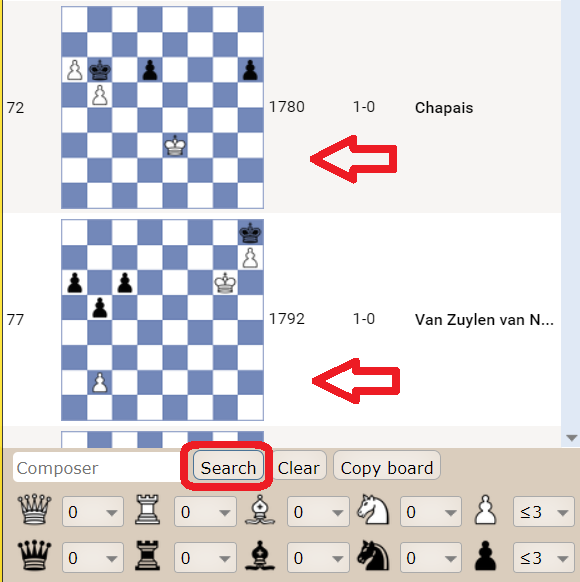
With that done, we now press Search just above, and it will show every endgame study with three pawns or less for both sides. If you wanted any number of pawns, you would leave it with the default zero or more. You can then choose the endgame study in the list above to view and solve, or simply play through.
The right side can definitely seem strange, notably that very odd Radar Board button, but in fact it is nothing to worry over. As you will see, the radar button is actually a very clever hint system.
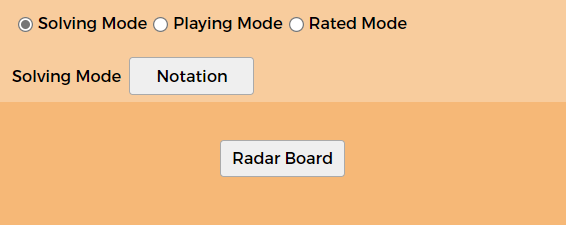
So the top offers three options: Solving mode, Playing mode, and Ratings mode.
Solving mode is designed to allow you to work through the moves, trying to find both the moves for White and for Black. It is important to know that unlike a standard endgame or middlegame you might be studying, all studies are designed for White to play first. In this mode you are allowed to access the engine if you want, and can even see the official solution by clicking on Notation.

Tip: You can also use the Radar Board hint system, which will be described below. It can be very useful, so don't miss it.
It is worth adding that in Study competitions, where you are asked to solve them, you are required to provide the full line for both White and Black.

Next comes Playing mode. In this mode you are still allowed an engine, but cannot see the notation (you can switch at any time, so don't fret to much about it). Here you play only White's moves, and the app will fill in Black's moves, either the ones in the actual solution or the engine's reply if there is none. You are essentially playing for White, as if this were a 'normal' game.
Rating mode is the same as Playing mode with one crucial difference: no hints, no outside help (at least not within the app). This is full test mode, and if you are able to solve the position will be ranked in the Study leaderboard. Bear in mind, there is no punishment if you want to return to Playing mode to ask for a hint, such as using the Radar Board, it just won't count for the ranking.
This is a fairly innovative hint system that was introduced here and is available for both Solving mode and Playing mode. The idea is simple: when you click on it, you are shown a future situation for the study's solution, so you have an idea what you are aiming for, or what the central idea and goal is. While It is still up to you to figure out how to reach your destination, you now know what that destination is. Be warned, sometimes this can pretty much give the solution, so use it sparingly if you really want to try to solve it on your own.
For example, let's suppose you are staring at this classic study by Troitzky. You look at it long and hard but cannot seem to figure out what you're supposed to do. You then click on Radar Board and are shown this position.
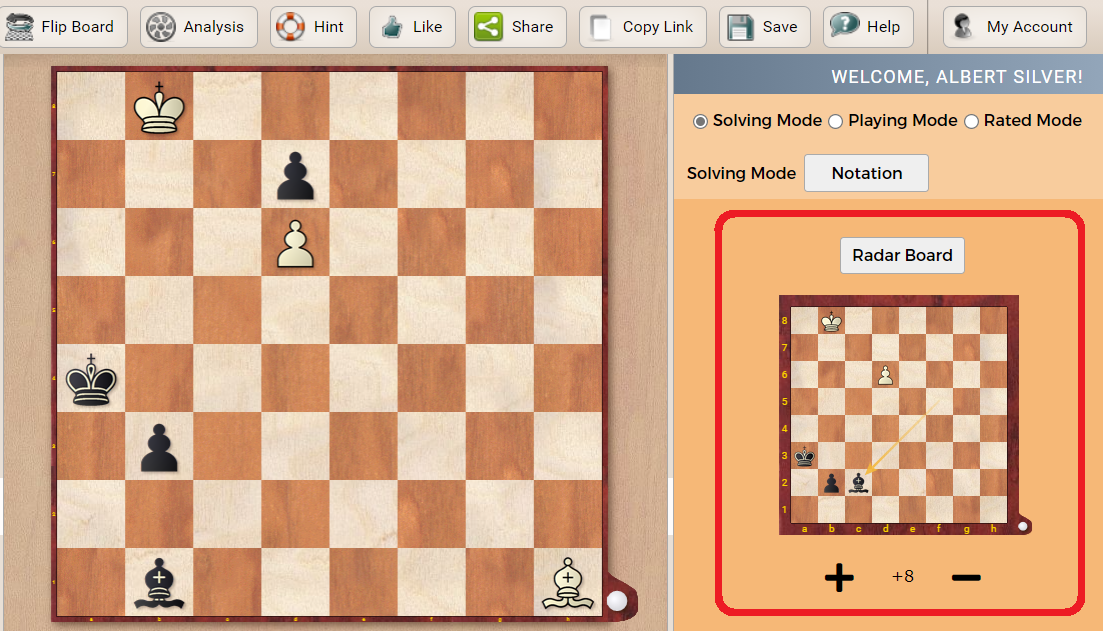
You now have a very clear idea what to do. You can configure the depth of the hint, how many moves ahead it shows, by clicking on the + (plus) and - (minus) buttons.
After choosing the Study you want to view, you may wish the search area were gone so you could enjoy a larger board filling the screen. The first thing you might expect is to be told to drag and drop the divider to the left to shrink it, but not so! Instead if you simply click on the divider, it will instantly be minimized, giving you a huge board to analyze on in Playing or Ranking mode.
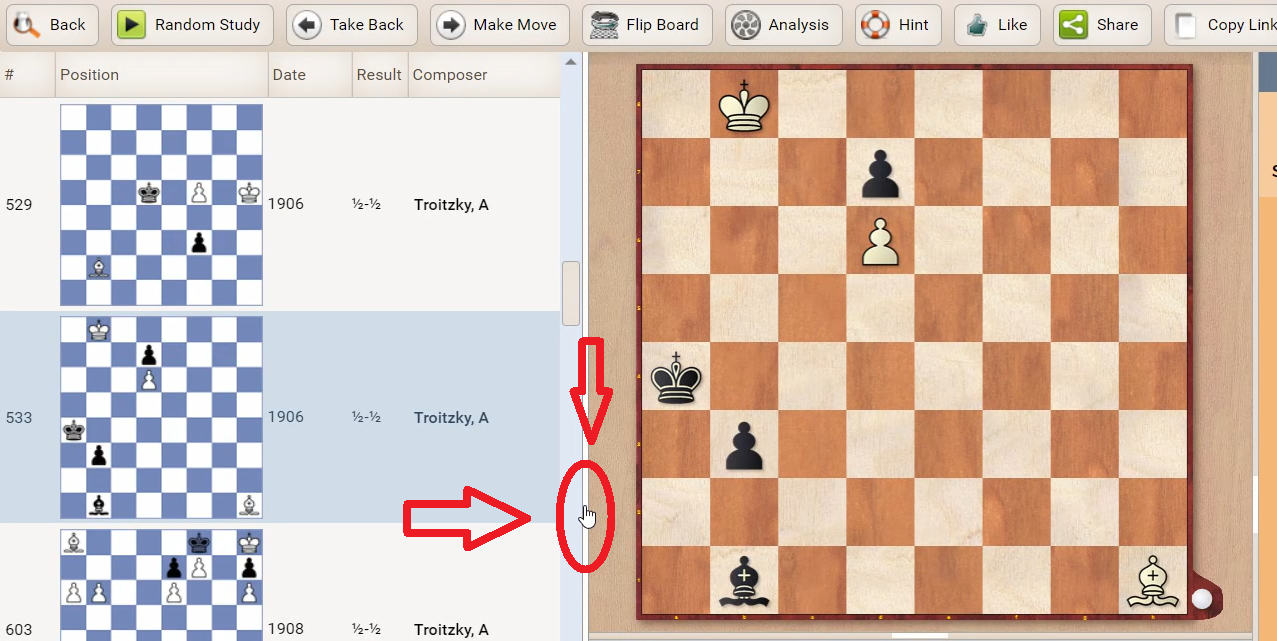
Make sure the mouse icon is that of a hand as in the image when clicking on the divider to get it to completely minimize.

To return the search area once you are done, you guessed it, just click on it again and the search area will be returned.
Studies are not only incredibly beautiful endgame compositions, with fascinating and sometimes breathtaking solutions, but they can be invaluable tools to work on your chess, by helping develop your imagination, calculation skills, and endgame understanding. If you combine this with the study of endgame works such as the many wonderful video courses by Karsten Mueller, the resident endgame evangelist, or “Dvoretsky’s Endgame Manual”, you will be giving yourself the best chances to achieve your chess goals, all while being exposed to the finest of chess culture and beauty. I know I will be adding this to my own study plans, and heartily recommend you do the same.
Click here to go to the page of ChessBase Account for subscription options